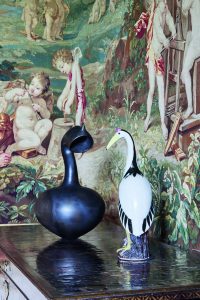Welcome to Ceramic Review
Ceramic Review is the magazine for contemporary and historical ceramics, ceramic art and pottery.
Ceramic Review Issue 334
July/August 2025
Ceramic Review is the magazine for contemporary and historical ceramics, ceramic art and pottery.
July/August 2025
A new exhibition by Magdalene Odundo is taking place at Houghton Hall. Beth Williamson explores the context of the ceramic artist’s work in this historic setting
It has become rather commonplace for Britain’s historic houses to show exhibitions of contemporary art within their walls or throughout their grounds. Yet there is nothing commonplace about the creations of Kenyan-born British ceramic artist Dame Magdalene Odundo and the exhibition of her work at Houghton Hall in Norfolk.
This Palladian house was built in the 1720s for Sir Robert Walpole, Britain’s first Prime Minister. A joint project between two architects, the house is filled with extravagant 18th-century interior decorative schemes by the Georgian architect William Kent.
With complex historic narratives of wealth and power to negotiate, this is no straightforward exhibition. Spanning the length and breadth of Odundo’s phenomenal 30-year-long career, it will also include a significant new commission made during her residency at Wedgwood’s factory in Stoke-on-Trent.
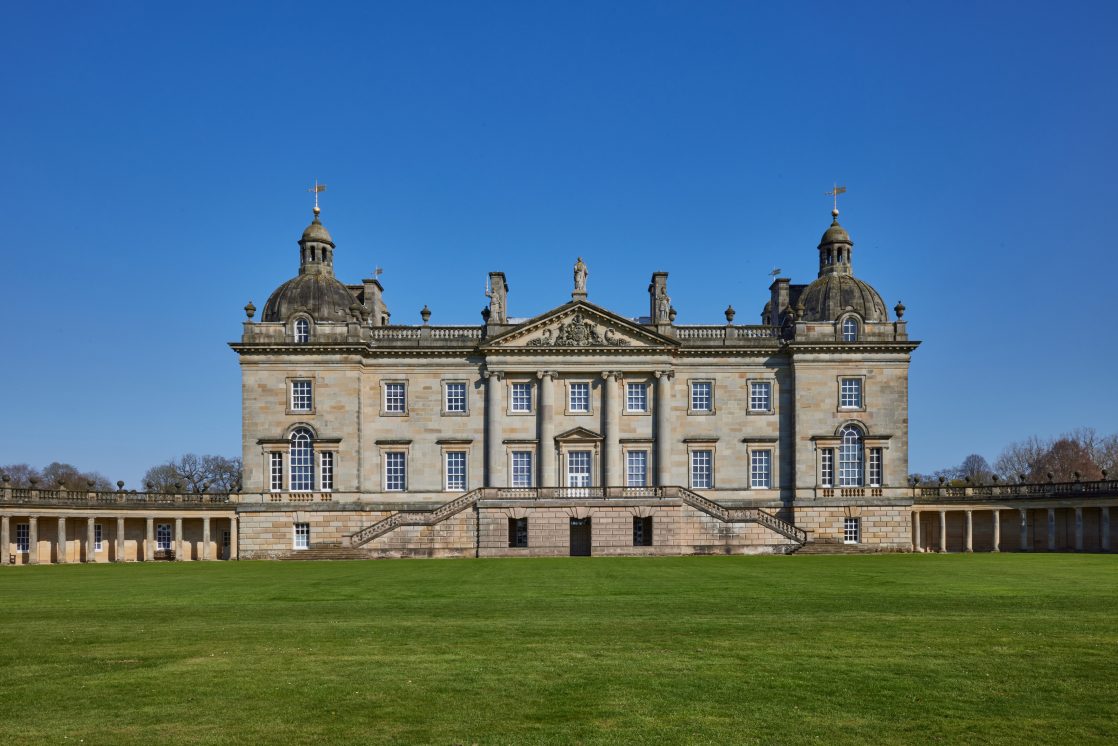
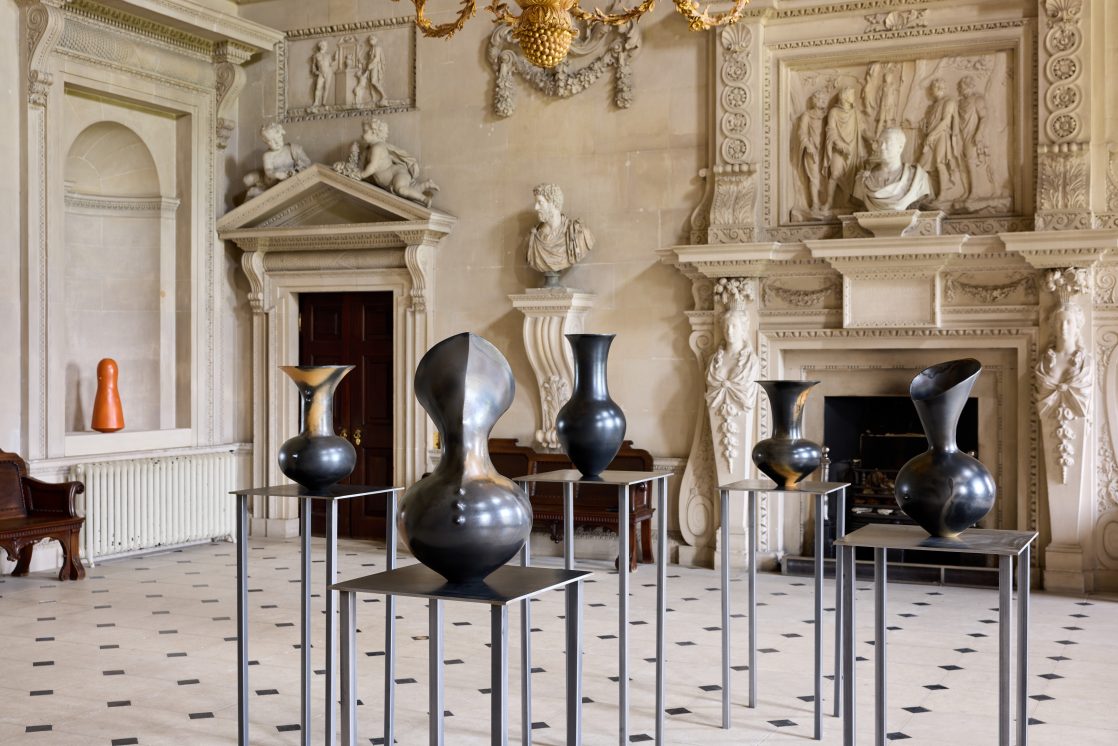
EARLY INFLUENCES
Odundo, who originally trained in graphic design at the Kenya Polytechnic in Nairobi, moved to the UK in 1971, where she studied at the Cambridge School of Art (now Anglia Ruskin University), the University for Creative Arts in Farnham and at the Royal College of Art. At the latter, her professor, Eduardo Paolozzi, encouraged her to visit the British Museum. Paolozzi had found inspiration in African sculptures at the Pitt Rivers Museum when he was a student in Oxford. If he thought Odundo would have a similar experience at the British Museum, he was wrong.
Instead, she was taken by the work of Christopher Dresser – hybrid ceramic vessels of the 1880s that draw on multiple sources to make something new. In Dresser’s language: ‘Study what has gone before, not with a view to becoming a copyist but the object of gaining knowledge and of seeking out general truths and broad principles’.
Since she graduated in 1982, this is the philosophy Odundo has practised. One striking example of this is her visits to the Fitzwilliam Museum in Cambridge, where she was overwhelmed by Egyptian-Kerma beakers with black and red surfaces, an effect achieved through reduction firing. This later inspired her own distinctive black and red patinas and techniques.
Yet her cross-cultural influences and touchstones were cast far and wide as she looked to European modernism, Bernard Leach in Japan, and, importantly, studio visits with Michael Cardew who encouraged her to visit the Pottery Training Centre in Abuja, Nigeria, where she was taught by Ladi Kwali and others.
Now, Odundo is well known for the distinctive sculptural vessels that draw on her myriad interests in historic and contemporary making across different cultures. Exploring diasporic identity in her making, she uses traditional methods and processes in making hand-built sculptures, often with anthropomorphic references to the female body, that take her several months to complete. Looking to both the natural and the handmade, she fuses forms in these deeply affective vessels.
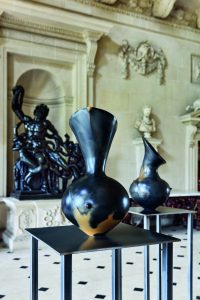
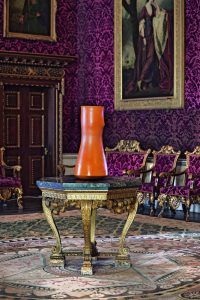
ROUSING RESPONSE
What is most intriguing about this exhibition is the manner in which Odundo responds to the formality of the state rooms at Houghton Hall, occupying their interior spaces with a series of interventions that promise both playful and serious intent, foregrounding and challenging the form and function of Kent’s lively 18th-century design schemes. Not only will the particular placement of her works in each room illuminate her many references and inspirations, but they will also spark dialogues with the historic context in which they find themselves.
In Houghton Hall’s contemporary gallery space, Odundo will show her spectacular glass sculpture Metamorphosis and Transformation, 2011. An important work in her development, it was made at the Museum of Glass in Tacoma, Washington, where she was in residence, and at Pilchuck Glass School in Seattle. The 28 blown glass vessels that comprise the work are based on the forms of ear studs from ancient Egypt 3,500 years ago. The composition of the installation, with glass vessels appearing to course across the surface of the ground before rising into space, gesture to Odundo’s interest in geological structures as well as migration narratives.
Odundo has made eight new ceramic works for this exhibition but the large-scale ceramic sculpture made during her residency at Wedgwood’s factory is set to be the highlight. She delved into the company’s archives, exploring historic forms, as well as interrogating the social and political ideas of its founder Josiah Wedgwood,
a prominent voice in the abolitionist movement of the late 18th century.
This impressive centrepiece has been made using historic moulds from the archive and is created in Jasperware, an unglazed dense stoneware first developed by Wedgwood in the 1770s. Recognised for its matt finish and classical motifs, Odundo’s Jasperware piece is adorned with images that explore the legacies of slavery and underline the pressing need for political activism and protest in contemporary times. The atrocities of the slave trade are shown alongside contemporary scenes of protest, including recent riots in her Kenyan birthplace.
Odundo’s burnished pots and delicate glass sculptures may be beautiful but, make no mistake, this is contemporary art at its best, politically, socially and ecologically engaged, and all in the middle of an English country estate.
Magdalene Odundo at Houghton Hall,
Houghton Hall, Norfolk,
12 May to 29 September 2024; houghtonhall.com
Images:
Houghton Hall: © Houghton Hall
Installation photography:
Magdalene Odundo at Houghton Hall
Installation view
© Houghton Hall
Photo: Pete Huggins
